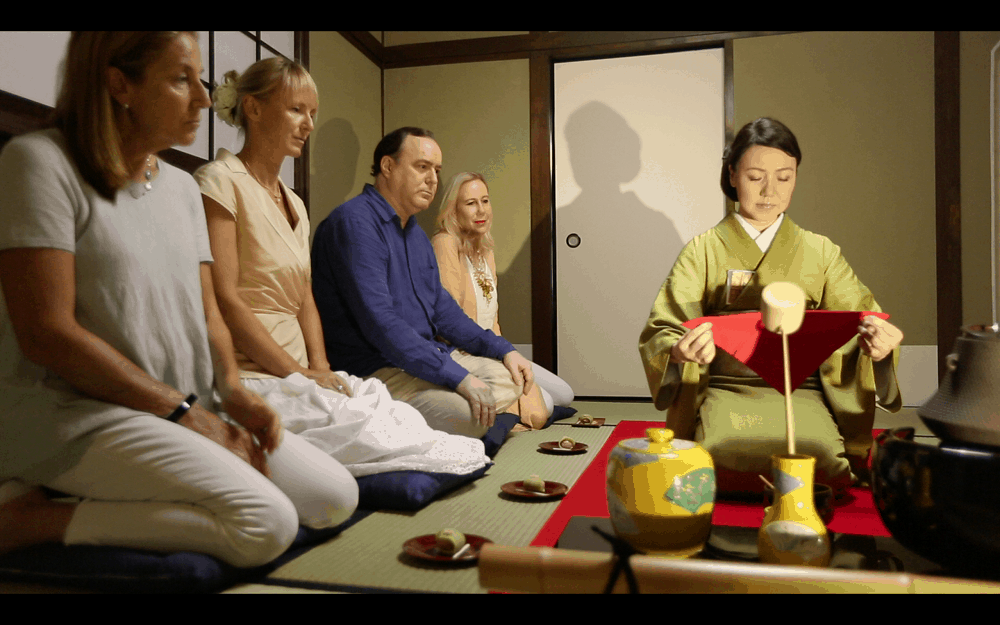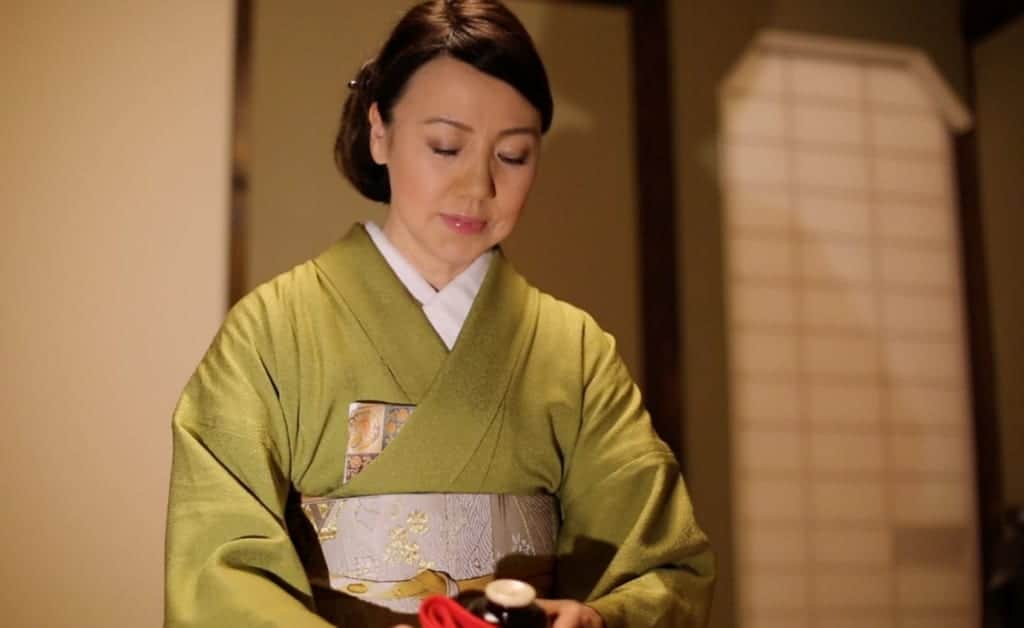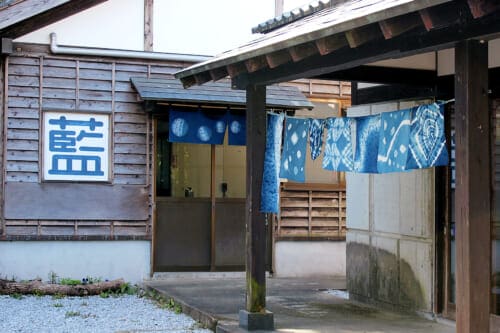A traditional Japanese art, green tea tasting, meditation, awakening; so many terms used to define the Japanese tea ceremony or chadō (茶道 “path or way of tea”). But the essence of the tea ceremony can only be understood through experience. And, for my part, only practicing tea under authentic conditions has allowed me to grasp its nature.
If you’re staying in Tokyo, don’t be mistaken; it can be tempting to opt for a quick 30-minute introduction to tea ceremony offered by many tourist establishments. Unfortunately, these experiences are often meaningless as no explanation is given and you may leave disappointed, wondering why such importance is given to the tea ceremony.
It was at the Shizu-Kokoro certified school in Asakusa that I had the chance to attend a 90-minute workshop, ideal for a complete introduction to chadō.
A Certified School In an Authentic Location
Located in Tokyo’s touristy Asakusa but away from the tourist hustle and bustle, when getting off at Tawaramachi station you will cross charming streets as you approach the traditional Japanese house where Shizu-Kokoro has taken up residence.
As soon as you enter, you will be greeted by the radiant Mika, or more accurately Soka, her tea ceremony instructor’s name, dressed in a kimono. You will pass through a small indoor Japanese garden before settling in around a large wooden table.
Shizu-Kokoro is a school certified by the Kyoto Urasenke, one of the largest Japanese tea ceremony schools in the world. As a school that excels at the instruction of tea ceremony for beginners and practitioners alike, the workshop begins with an explanation of the fundamentals of chadō while sipping a cup of cherry blossom tea.
Over 20 years of Tea Ceremony Practice
Light, intensity, beauty, and wisdom are the words that come to mind to describe my meeting with Mika. And for good reason, as Mika has over twenty years of experience in chadō and has obtained a 1st rank instructor certification.
After several years of hard work in the Los Angeles film production industry, Mika discovered the soothing benefits of the “Way of Tea” from Mrs. Sosei Matsumoto, one of the most recognized and influential tea masters in the United States.
In addition to being an expert in the tea ceremony, Mika is fluent in English and knows how to adapt to guests from around the world who visit Tokyo in search of a cultural experience.

The Elements of a Proper Tea Ceremony
Once you have acquired the theoretical bases, Mika takes you upstairs to a traditional tea room with tatami. She will guide you through each step of the tea ceremony and give you the explanations and historical references necessary for your understanding.
The Tokonoma
First of all, you will contemplate the Tokonoma, a small alcove with a raised floor in which there are 3 elements: a calligraphy (evoking a poem, a saying, or a word, which expresses the intention of the ceremony), a seasonal floral arrangement to remind our connection with nature, and incense to purify the atmosphere.

The Choice of Utensils
Then, you will observe the utensils needed for the ceremony and their arrangement. The choice of utensils is indeed important and meaningful.
For example, the kettle used during the workshop is unique and its shape evokes Mount Fuji, which carries a strong symbolism of Japan. Also, the first and main tea, koicha (濃茶, “strong tea” or “thick tea”) should be served in a plain handmade bowl; while the second tea, usucha (薄茶, “light tea” and foamy) can be served in a transparent bowl. Note that serving usucha tea is not necessarily part of the ceremony but it was mainly an adaptation to allow more people to enjoy the tea. The taste of the koicha can be surprisingly bitter while the usucha is more palatable.
The Arrangement of the Utensils
The arrangement of the utensils as well as the traditional Japanese cakes served during the ceremony change according to the seasons.
In the summer, the kettle is placed in a corner of the room away from the guests, and Mika sets a large, open, cold water container to visually refresh the room. As she pointed out, you have to imagine that back then, air conditioning did not exist and any means to make the room seem cooler were appreciated!
So many details are part of the Zen philosophy-inspired chadō‘s many teachings: beauty lies in the details of everyday objects. Attending such a ceremony undoubtedly develops one’s sense of observation.

The Tea Ceremony: A Precious Moment to Relax
Finally, tea preparation and service begins. We observe Mika performing a very precise sequence of slow and meticulous movements; each gesture counts and has a precise meaning. As she prepares the tea, Mika moves like a dancer, with a lightness and an elegance that is rare.
At first intrigued by these ritualized gestures, one wonders: “Why does she perform the exact same gesture three times in a row with the bamboo whisk? Why does she repeat a succession of folding and unfolding of the fukusa, the red silk fabric used to clean the tea instruments? What does this mean?”. Then as if hypnotized, one simply appreciates the grace of the moment.
Mika informs us about the meaning of these gestures, all of which derive their significance from Buddhism and have their importance at every stage of the preparation.
To close the ceremony, our host explains why she chose the bowl in which the tea was served to you and the few rules on how to receive the tea as a participant. Then it will be your turn to try preparing tea for your guest!


The Benefits of Tea Ceremony: Active Meditation
After this workshop, I felt so at peace that I wanted to know more about the benefits of tea ceremony. Luckily, Mika is studying neuroscience and psychology. She explained to me that by observing the location and details of the utensils, watching the meticulous gestures of the tea instructor, and then performing them yourself, you are doing active meditation.
We are so concentrated on the actions that the left brain associated with logical and rational reasoning is active, while the right brain (intuitive and emotional) is at rest.
On the other hand, the prefrontal cortex (associated with learning) is stimulated by this mysterious art, and it feels rewarding to learn or to progress.

Practical Information
In short, Japanese tea ceremony offers a beautiful insight into traditional Japanese culture and its refinement while enabling you to disconnect from the everyday frenzy, at least for the time spent in the workshop.
But the ceremony is also an encounter with a rising master, imbued with wisdom. If you are visiting Tokyo, I strongly recommend a tea ceremony experience at Shizu-Kokoro school.
- Address: 1-9-8 Nishi Asakusa, Taito-Ku, Tokyo 111-0035 Japan
- Opening hours: 10 am – 6 pm
- Price: 4180 yen for a 90 minute workshop



















No Comments yet!